 Backend Development
Backend Development PHP Tutorial
PHP Tutorial Steps to implement custom rules for validators (Validators) using Yii framework
Steps to implement custom rules for validators (Validators) using Yii frameworkSteps to implement custom rules for validators (Validators) using the Yii framework
The Yii framework is a high-performance PHP framework that provides a rich set of validators (Validators) to validate user input. Sometimes, we need to customize some verification rules based on specific business needs. This article will introduce the steps on how to use custom rules in the Yii framework, and provide code examples for readers to better understand.
Step 1: Create a custom rule file
First, we need to create a file to store the custom validation rules. In the Yii framework, it is customary to place such files in the /validators directory. This file can be created using the command line:
mkdir validators touch validators/CustomValidator.php
In the CustomValidator.php file we will define our own validation rules. Here is a simple example:
<?php
namespace app
alidators;
use yii
alidatorsValidator;
class CustomValidator extends Validator
{
public function validateAttribute($model, $attribute)
{
// 在这里编写自定义的验证规则逻辑
$value = $model->$attribute;
// 验证规则的逻辑代码
if ($value != 'custom') {
$this->addError($model, $attribute, 'The attribute must be "custom".');
}
}
} In the above example, we have created a class named CustomValidator, which inherits from the Validator class. In the validateAttribute method, we write custom validation rule logic that will be used in the model.
Step 2: Use custom rules
After our custom validation rule file is created, we need to use it in the model. The following is an example of using custom rules:
<?php
namespace appmodels;
use app
alidatorsCustomValidator;
use yiiaseModel;
class ExampleForm extends Model
{
public $attribute;
public function rules()
{
return [
[['attribute'], CustomValidator::className()],
];
}
} In the above example, we have created a model class named ExampleForm, which inherits from the Model class . In the rules method, we use the CustomValidator class to define a validation rule for the attribute attribute.
Now, when we validate the attribute attribute of the ExampleForm model, the validation rules in the CustomValidator class will be automatically called.
Step 3: Use custom rules for validation
After defining the custom rules in the model, we can use the model for validation in the controller or elsewhere. Here is a simple example:
<?php
namespace appcontrollers;
use appmodelsExampleForm;
use Yii;
use yiiwebController;
class ExampleController extends Controller
{
public function actionIndex()
{
$model = new ExampleForm();
// 假设用户以POST方式提交了表单数据
if ($model->load(Yii::$app->request->post()) && $model->validate()) {
// 验证成功,执行其他业务逻辑
} else {
// 验证失败,重新显示表单
return $this->render('index', [
'model' => $model,
]);
}
}
} In the above example, we created a controller named ExampleController and used # in the actionIndex method ##ExampleFormModel. When the user submits form data via POST, we first load the data into the model, and then call the validate() method to verify whether the data conforms to the rules of the model.
The above is the detailed content of Steps to implement custom rules for validators (Validators) using Yii framework. For more information, please follow other related articles on the PHP Chinese website!
 使用Yii框架创建电影网站Jun 21, 2023 am 09:04 AM
使用Yii框架创建电影网站Jun 21, 2023 am 09:04 AM随着互联网的普及以及人们对电影的热爱,电影网站成为了一个受欢迎的网站类型。在创建一个电影网站时,一个好的框架是非常必要的。Yii框架是一个高性能的PHP框架,易于使用且具有出色的性能。在本文中,我们将探讨如何使用Yii框架创建一个电影网站。安装Yii框架在使用Yii框架之前,需要先安装框架。安装Yii框架非常简单,只需要在终端执行以下命令:composer
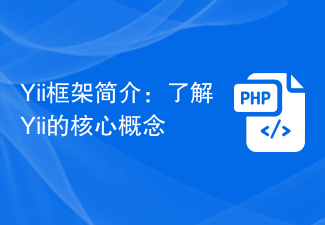 Yii框架简介:了解Yii的核心概念Jun 21, 2023 am 09:39 AM
Yii框架简介:了解Yii的核心概念Jun 21, 2023 am 09:39 AMYii框架是一个高性能、高扩展性、高可维护性的PHP开发框架,在开发Web应用程序时具有很高的效率和可靠性。Yii框架的主要优点在于其独特的特性和开发方法,同时还集成了许多实用的工具和功能。Yii框架的核心概念MVC模式Yii采用了MVC(Model-View-Controller)模式,是一种将应用程序分为三个独立部分的模式,即业务逻辑处理模型、用户界面呈
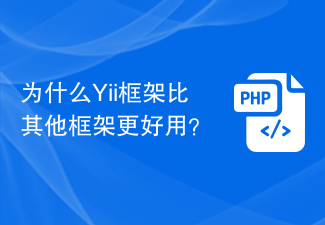 为什么Yii框架比其他框架更好用?Jun 21, 2023 am 10:30 AM
为什么Yii框架比其他框架更好用?Jun 21, 2023 am 10:30 AMYii框架是一个高性能、可扩展、安全的PHP框架。它是一个优秀的开发工具,能够让开发者快速高效地构建复杂的Web应用程序。以下是几个原因,让Yii框架比其他框架更好用。高性能Yii框架使用了一些先进的技术,例如,延迟加载(lazyloading)和自动加载机制(automaticclassloading),这使得Yii框架的性能高于许多其他框架。它还提
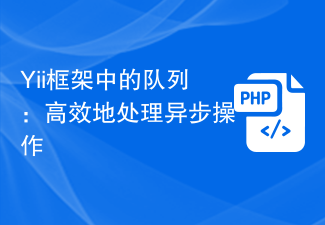 Yii框架中的队列:高效地处理异步操作Jun 21, 2023 am 10:13 AM
Yii框架中的队列:高效地处理异步操作Jun 21, 2023 am 10:13 AM随着互联网的快速发展,应用程序对于处理大量并发请求和任务变得越来越重要。在这样的情况下,处理异步任务是必不可少的,因为这可以使应用程序更加高效,并更好地响应用户请求。Yii框架提供了一个方便的队列组件,使得处理异步操作更加容易和高效。在本篇文章中,我们将探讨Yii框架中队列的使用和优势。什么是队列队列是一种数据结构,用于处理数据的先进先出(FIFO)顺序。队
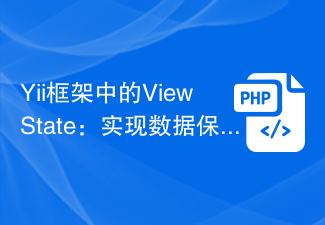 Yii框架中的ViewState:实现数据保护Jun 21, 2023 am 09:02 AM
Yii框架中的ViewState:实现数据保护Jun 21, 2023 am 09:02 AMViewState是ASP.NET中的一种机制,用于保护页面的隐私数据。而在Yii框架中,ViewState同样也是实现页面数据保护的重要手段。在Web开发中,随着用户界面操作的复杂度增加,前端与后端之间的数据传输也愈发频繁。但是,不可避免的会有恶意用户通过网络抓包等手段截获数据。而未加保护的数据可能含有用户隐私、订单信息、财务数据等重要资料。因此,加密传输
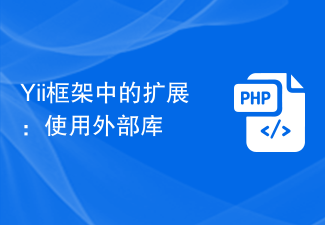 Yii框架中的扩展:使用外部库Jun 21, 2023 am 10:11 AM
Yii框架中的扩展:使用外部库Jun 21, 2023 am 10:11 AMYii是一款优秀的PHP框架,它提供了很多丰富的功能和组件来加快Web应用程序的开发。其中一个非常重要的特性就是可以方便地使用外部库进行扩展。Yii框架中的扩展可以帮助我们快速完成许多常见的任务,例如操作数据库、缓存数据、发送邮件、验证表单等等。但是有时候,我们需要使用一些其他的PHP类库来完成特定的任务,例如调用第三方API、处理图片、生成PDF文件等等。
 Yii框架中的分页机制:优化数据展示效果Jun 21, 2023 am 08:43 AM
Yii框架中的分页机制:优化数据展示效果Jun 21, 2023 am 08:43 AM在现今互联网时代,数据的处理和展示对于各种应用而言都是至关重要的。对于一些数据量较大的网站,其展示效果直接影响用户体验,而优秀的分页机制可以使得数据展示更加清晰,提高用户的使用体验。在本文中,我们将介绍Yii框架中的分页机制,并探讨如何通过优化分页机制来改进数据展示效果。Yii框架是一种基于PHP语言的高性能、适用于Web应用的开发框架。它提供
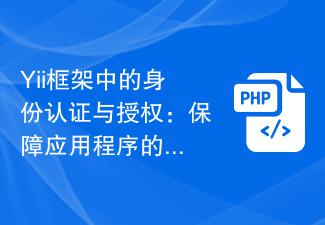 Yii框架中的身份认证与授权:保障应用程序的安全性Jun 21, 2023 am 09:57 AM
Yii框架中的身份认证与授权:保障应用程序的安全性Jun 21, 2023 am 09:57 AM在Web应用程序开发领域,身份认证和授权是保障应用程序安全性必不可少的两个环节,而Yii框架提供了完善的身份认证和授权机制,帮助开发者轻松实现这些功能,保障应用程序的安全性。一、身份认证1.1基础认证Yii框架中的基础认证机制采用HTTPBasic认证的方式实现。当用户在浏览器中访问需要认证的页面时,服务器会发送一个401Unauthorized响应,


Hot AI Tools

Undresser.AI Undress
AI-powered app for creating realistic nude photos

AI Clothes Remover
Online AI tool for removing clothes from photos.

Undress AI Tool
Undress images for free

Clothoff.io
AI clothes remover

AI Hentai Generator
Generate AI Hentai for free.

Hot Article

Hot Tools

Zend Studio 13.0.1
Powerful PHP integrated development environment

Notepad++7.3.1
Easy-to-use and free code editor

Atom editor mac version download
The most popular open source editor

SAP NetWeaver Server Adapter for Eclipse
Integrate Eclipse with SAP NetWeaver application server.

MinGW - Minimalist GNU for Windows
This project is in the process of being migrated to osdn.net/projects/mingw, you can continue to follow us there. MinGW: A native Windows port of the GNU Compiler Collection (GCC), freely distributable import libraries and header files for building native Windows applications; includes extensions to the MSVC runtime to support C99 functionality. All MinGW software can run on 64-bit Windows platforms.





